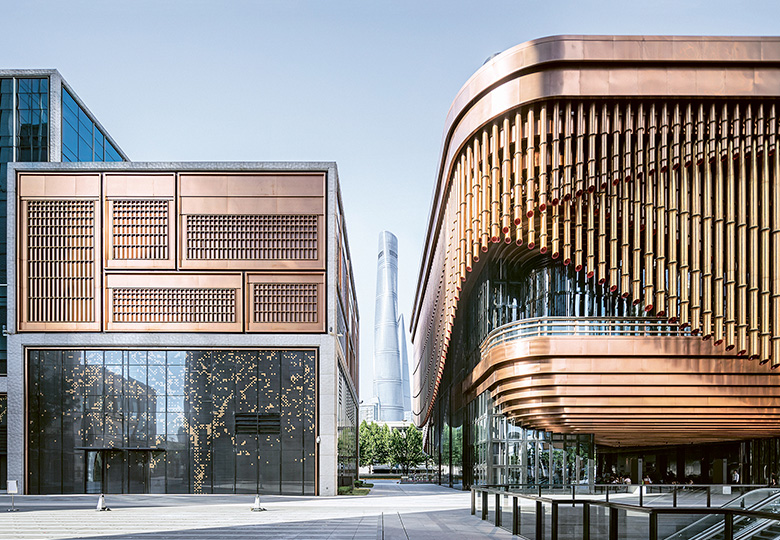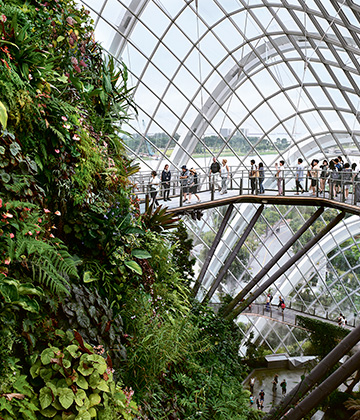Safety for Large Structures – A Protective Sheath Against Fire
Whether sports stadiums, skyscrapers or airport terminals – modern buildings often have a steel skeleton. Because they have a low dead load, but a high load-bearing capacity, they are usually easy to assemble. Steel structures are therefore widespread, especially in Asian megacities.
But steel has an Achilles’ heel: it can’t withstand high temperatures. When the temperature reaches 500°C, the steel frame quickly loses its strength. The material expands, forcing other components out of the way – the building threatens to collapse.
When the temperature reaches 500°C, steel frames soften rapidly, and the buildings are in danger of collapse.

Skyscrapers in Shanghai: steel structures are very widespread, especially in Asia.
However, there is a solution to the problem: intumescent coatings can provide reliable fire protection. During a blaze, the special coatings inflate by as much as ten to one hundred times their original thickness, forming an insulating foam cladding around the steel girders. The foam slows the rate at which the steel heats up, greatly delaying the time taken to reach the critical 500°C.
Using the right binder is key to this process because it determines how fast the layer of foam forms and how thick it is around the steel columns. Without polymer dispersions from WACKER, the coating would be too brittle, would not adhere to the metal substrate, or might easily spall off.
New Development from South Korea
The sandwich panels that are often installed as the walls or ceilings of warehouses or production buildings ignite in the event of a fire. Dr. Jae-Ha Kim, head of WACKER’s polymer business in Asia, and his team therefore developed innovative fire-retardant VAE dispersions especially for this purpose. The panels usually consist of two thin sheets of steel or aluminum and a foam layer of expanded polystyrene (EPS), which provides the necessary insulation.
“The buildings can thus resist a fire for much longer, giving rescue teams more time to extinguish the fire and save lives.”
Dr. Jae-Ha Kim, head of polymer business in Asia
Thanks to the new dispersions from the research lab in Seoul, the panels retain their shape and do not collapse – even under intense heat and even if they have been completely carbonized. “Since the shape remains stable, the panels do not break down,” he explains. “The buildings can thus withstand a fire for much longer, giving rescue teams more time to extinguish the fire and save lives.”
Against Fire, for the Environment
An additional benefit is that the dispersions are water-based. Since 2014, construction materials in South Korea have also had to meet stricter environmental protection requirements. So, WACKER experts developed an alternative to solvent-based binders. WACKER is not only making an important contribution to the safety of buildings, but is also protecting the environment.

Ideal for modern high-rise buildings: steel skeletons are lightweight, support heavy loads and are easy to erect.

Unconventional stadium architecture: the “Bird’s Nest” in Beijing